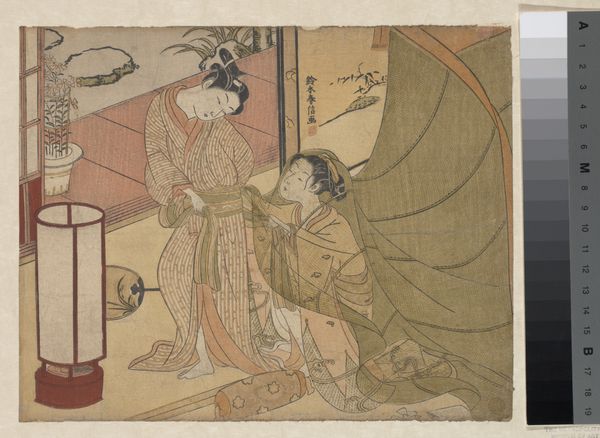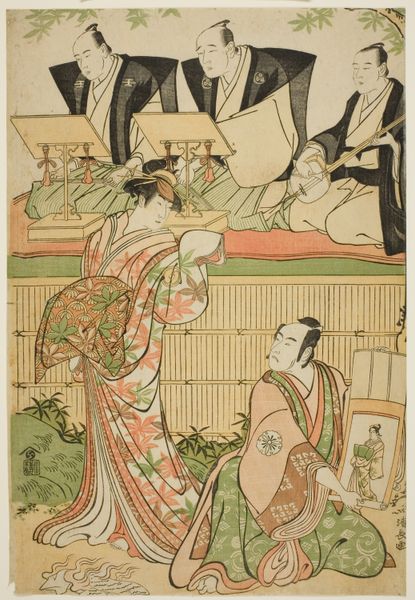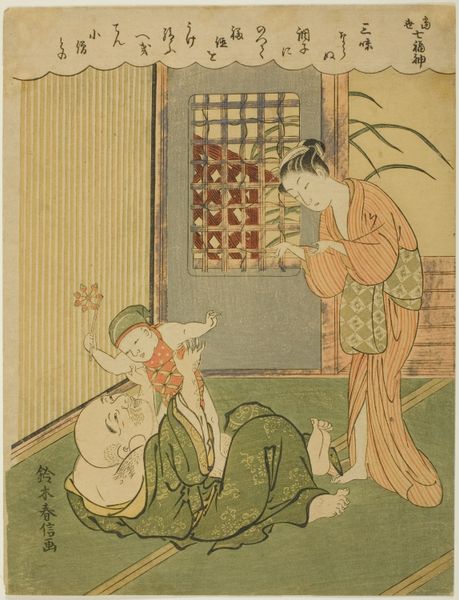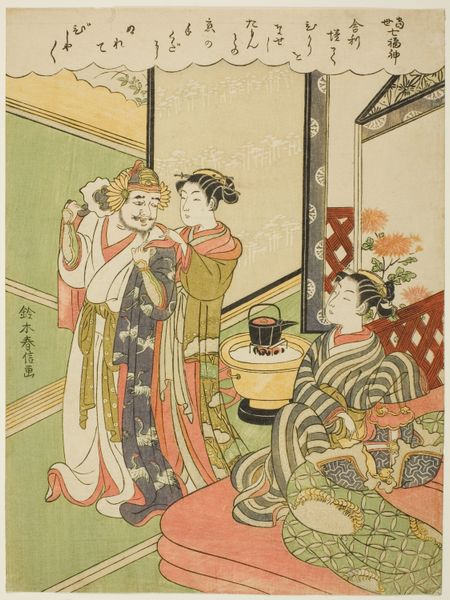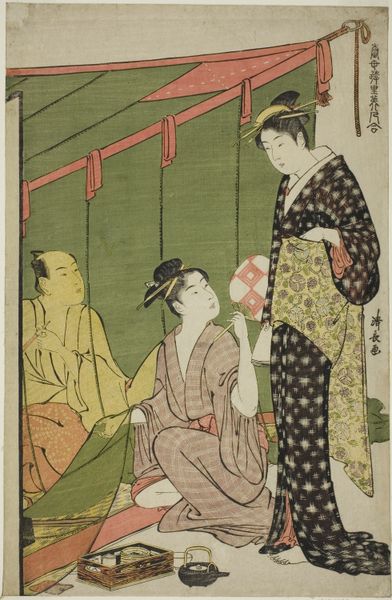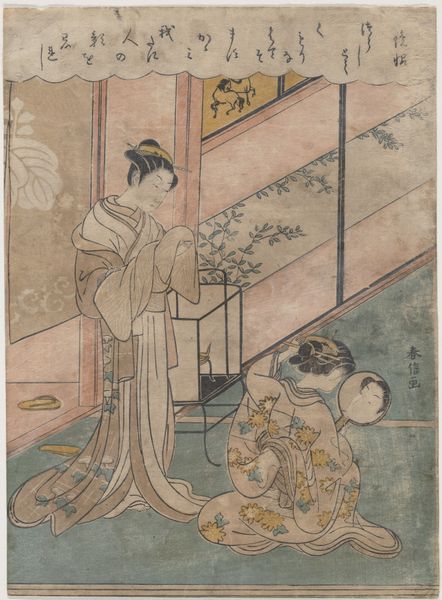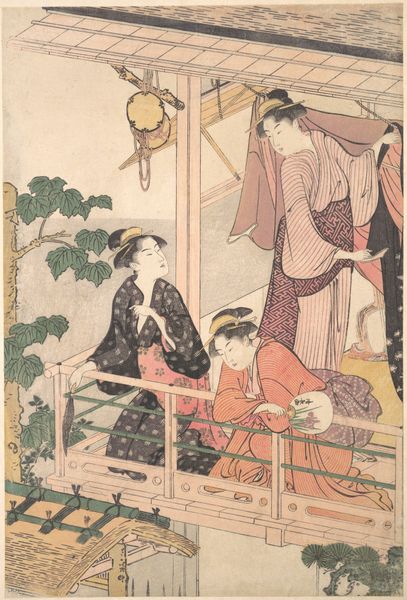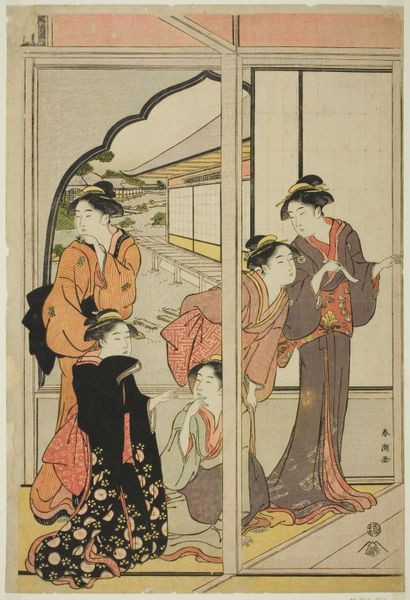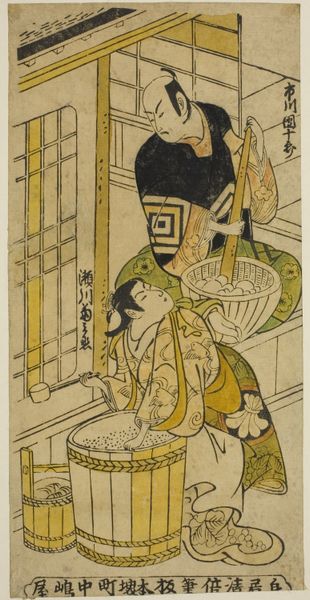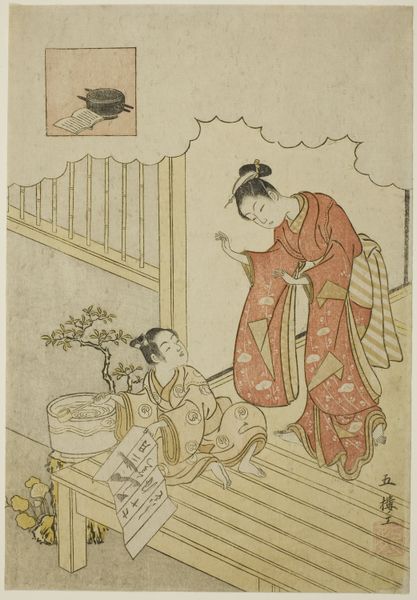
Parting of Lovers: The Morning After 1755 - 1780
0:00
0:00
print, woodblock-print
#
portrait
# print
#
asian-art
#
ukiyo-e
#
japan
#
figuration
#
historical fashion
#
woodblock-print
#
genre-painting
Dimensions: H. 8 in. (20.3 cm); W. 12 5/16 in. (31.3 cm) medium-size print (chu-ban)
Copyright: Public Domain
Curator: Today, we’re looking at Suzuki Harunobu's woodblock print "Parting of Lovers: The Morning After," created around 1755-1780. Editor: My initial response is of muted melancholy. The overall palette feels delicate, but there’s a somber stillness conveyed through the slumped postures. Curator: Note how Harunobu employs a restrained palette. The delicate interplay of soft pinks, greens, and grays contributes to the image's serene yet subdued atmosphere. The composition is carefully arranged. Notice how the discarded lantern directs our gaze towards the two figures, subtly emphasizing their relationship. Editor: Indeed, the lantern on its side acts as an explicit visual cue for disruption. Beyond the lantern, other images of disruption can be located within the visual cues in this composition. Observe, in this intimate setting, that the woman stands with the help of another. This motif could represent societal expectations, a burdening from the figure who is already dressed with perfect hair, the other barely composed from the events of the night. I would suppose that the weight of societal expectations is a constant emotional weight to bear within a transient moment like this. Curator: I find your insights compelling. I had only considered the artist's emphasis on the surface, the interplay of lines, shapes, and the elegant curves of the figures within the defined space. The composition is carefully orchestrated with the internal geometry, and the arrangement subtly emphasizing the tension and intimacy between the two figures. This print reflects Ukiyo-e tradition's interest in capturing ephemeral moments of everyday life. Editor: The broken lantern isn't merely aesthetic, though; it serves as a potent symbol of broken promises or fleeting pleasure. The women shown exhibit conventional motifs related to female beauty as it shifts throughout time. Harunobu subtly questions the perceived perfection. In contrast, the discarded accessories further enhance this reading; these details symbolize moments of undone artifice that serve to highlight the woman’s real vulnerability and exposed reality. Curator: Well, considering our contrasting readings, it is now very difficult not to contemplate Harunobu’s "Parting of Lovers," as not merely a formal exercise in balancing color and line, but as a meditation on the complexities of human connection and transient experience. Editor: A rich image that encapsulates societal, transient expectation and emotional depth. It certainly leaves a lasting impression of melancholy tinged with beauty.
Comments
No comments
Be the first to comment and join the conversation on the ultimate creative platform.
